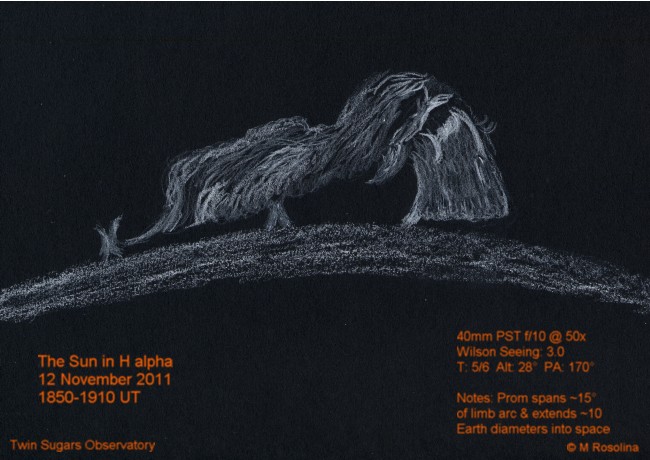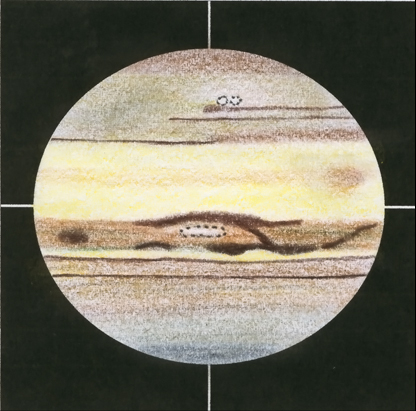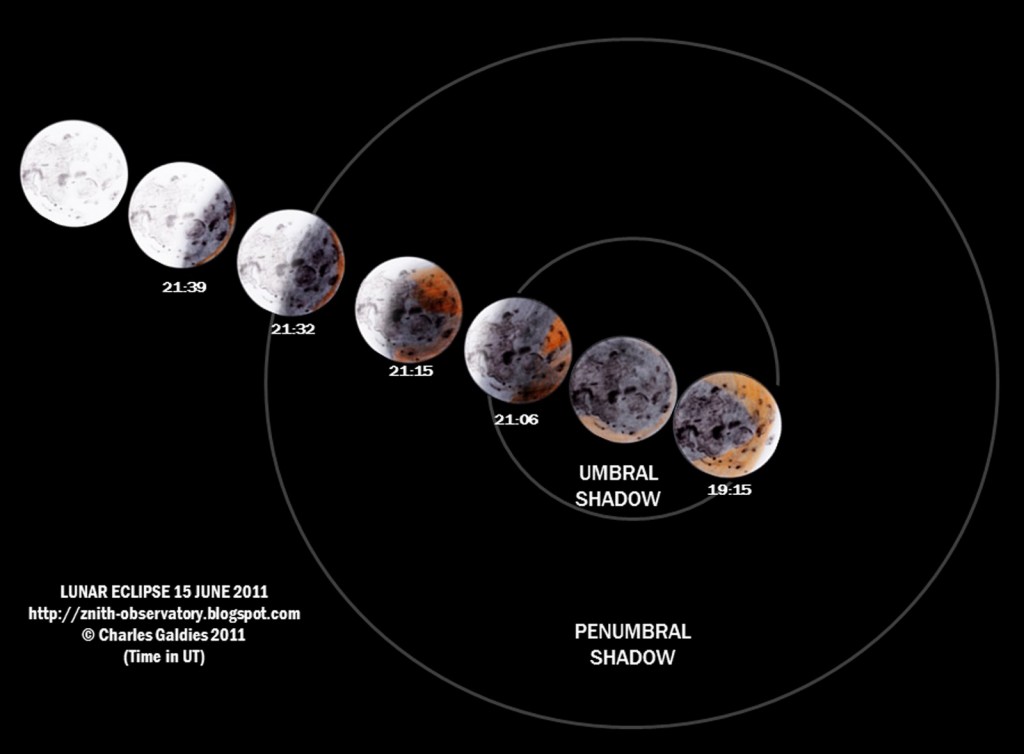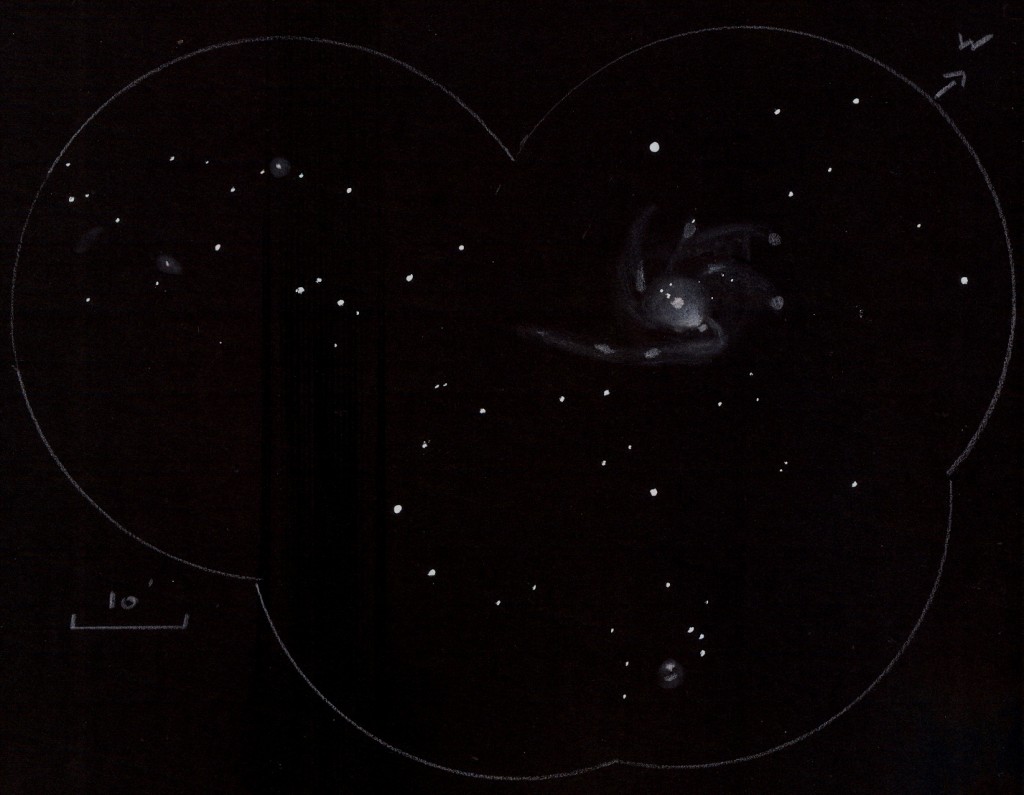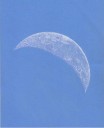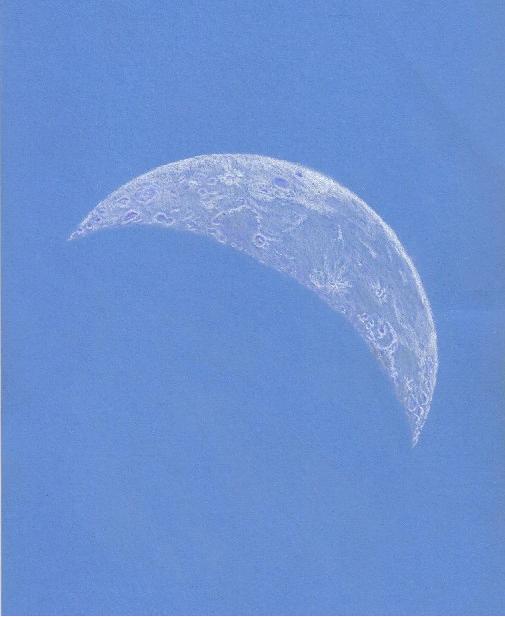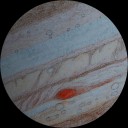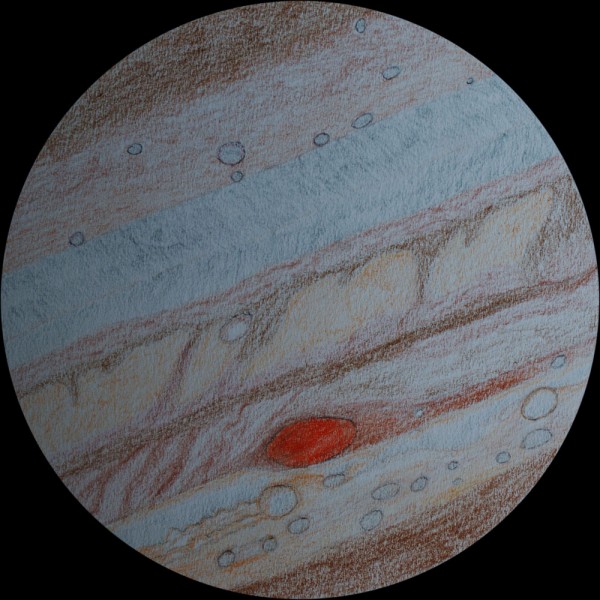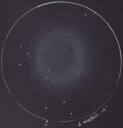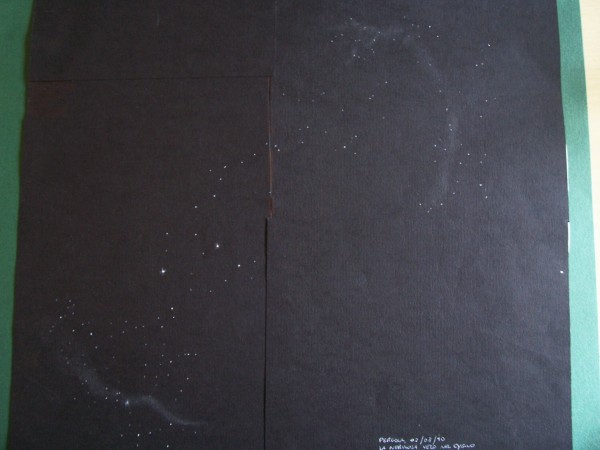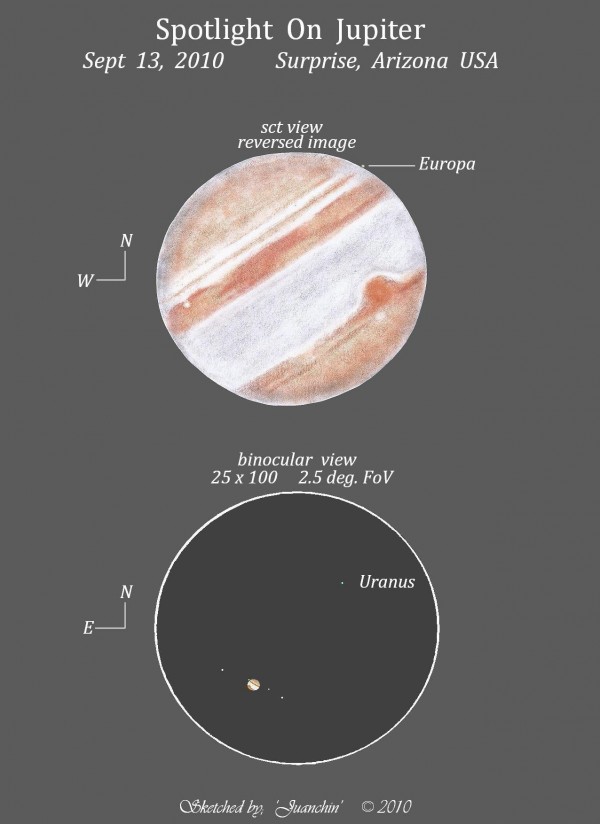
Object : Planet Jupiter
Date : September 13, 2010
Time : 12:00-12:45 LST/ 07:00-07:45 UT
Location : Surprise, Arizona USA
Medium : white paper, colored pencils, paint brush # 4 and #10 used as a
stump
Instruments : CPC 1100 SCT/ 25mm Plossl/ No filters/ Binoculars 25X100
Magnitude : -2.9
Weather : calm winds, clear skies, temp- mid to upper 80’s
Comments :
There is no better time than right now! As the summer parade of planets bid
farewell and disappear into the western horizon,(Venus,Mars & Saturn)
Jupiter steps up to the spotlight on the East side of town. Jupiter has an
ongoing list of activities happening on and off its surface. Physically, the
sheer size of its disk is expected to reach 50″ as it nears opposition on
the 20th of this month. As of the time of this sketch, it had a disk size of
49.7″. Although not as bright as Venus(-4.7), It’s pretty shiny for being
the only contender on the lonely Southeastern front of the night sky.
On its surface or close to its Jovian atmosphere, Jupiter was recently
recorded to have been struck by some sizeable bolides. Meteors that burst
into fireballs while getting pulled by the gravity of the gas giant. While I
did not notice any of those fireballs(would’ve been cool), I did notice
other features.Through the scope the most obvious is that Jupiter is
spinning with only one of the two major belts. Only the North Equatorial
Belt is clearly visible. Last spring, the South Equatorial Belt just
disappeared before our averted eyes. It’s believed to be hiding under a
thick blanket of ammonia clouds. Previous circumstances have shown that the
SEB will resurface sometime soon. For now, a slight grayish hue is all that
remains visible of the SEB ocassionally highlighted by darker shades of eddy
currents. The Great Red Spot is easy to ‘spot’ since the lack of the SEB
doesn’t mask it from view, it seems to ride adjacent to the South Temperate
Belt. The GRS is not alone, it was found to have an oval reddish storm about
half its size keeping company just South of its perimeter. Under steady sky
conditions, the designated ‘Oval BA’ or ‘Red Spot Jr” was barely discernible
to the Southwest of the GRS. A more pronounced white oval storm was embedded
and riding high on the westernmost edge of the NEB. For added effect, the
Galilean satellite Europa was just coming out of occultation on the Eastern
limb next to the North Temperate Belt.
From a different perspective, through the binoculars, Jupiter is not exactly
all alone. In the same field of view Uranus is not far away from its big
brother. During my observation both planets were a separated by less than 1
and 1/2 degrees. Uranus will also reach opposition hours later after
Jupiter. Uranus’ disk is very tiny in comparison with Jupiter but you can
still get a pastel lightgreen color out of it. I tried to locate with the
naked eye and had some slight success but I believe its because I knew where
to look. Other than that I think I would have a hard time picking it out-I
was in Surprise I have to admit, not exactly dark skies.
I hope you enjoyed this little report, wishing you all dark and clear skies!
Juanchin
